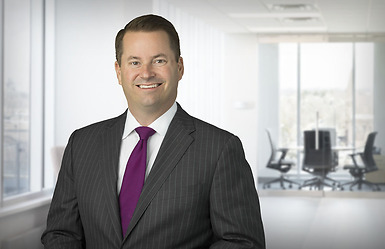If you have a license to a patent and have lingering doubts about whether the patent actually covers your product, two recent Supreme Court decisions should be of interest to you. Not only can a patent licensee challenge whether it infringes the underlying patent without breaching its license agreement, but when it does so, the patent owner bears the burden of proving infringement.
MedImmune, Inc. v. Genentech, Inc. Starts the Ball Rolling
Before 2007, it was widely assumed that a patent licensee could not challenge infringement or the validity of a patent it had agreed to license without first stopping royalty payments. Failing to pay royalties would breach the license agreement, thereby creating a live “controversy” for a court to decide. The downside of that approach is that the patent owner could claim that the licensee’s infringement was “willful” and seek treble damages and attorney’s fees in the subsequent patent infringement lawsuit. Not surprisingly, patent licensees did not see that as a risk worth taking and often continued paying royalties whether they believed they infringed a valid patent or not.
That changed in January 2007 when the Supreme Court decided MedImmune, Inc. v. Genentech, Inc. (MedImmune). In MedImmune, a patent licensee brought a declaratory judgment action asking a district court to declare the licensed patent invalid and not infringed. In contrast to the prevailing wisdom, however, the licensee in MedImmune did not stop paying royalties or otherwise breach the license agreement before filing the lawsuit. The patent owner argued that there was no “case or controversy” for the district court to decide because the licensee had not actually breached the license agreement. The district court agreed with the patent owner and dismissed the lawsuit. The Court of Appeals for the Federal Circuit affirmed that decision on appeal.
The Supreme Court reversed the Federal Circuit. It determined that a licensee is not required to put itself at risk before bringing a declaratory judgment action. As Justice Scalia explained, in colorful terms: “The rule that a plaintiff must destroy a large building, bet the farm, or (as here) risk treble damages and the loss of 80 percent of its business, before seeking a declaration of its actively contested legal rights finds no support in Article III.” As a result, a licensee may continue paying royalties (and thus avoid breaching the license agreement) while simultaneously challenging the underlying patent through a declaratory judgment action.
MedImmune represented a significant shift in the law governing patent licenses. But it also raised new questions, such as which party must prove infringement in a MedImmune-type challenge? Must the patent owner prove infringement, as in a normal patent infringement case? Or must the licensee prove non-infringement as the “plaintiff” in the declaratory judgment case? In January 2014, the Supreme Court answered these questions in Medtronic, Inc. v. Mirowski Family Ventures, LLC. (Medtronic).
Medtronic and the Burden of Persuasion
In Medtronic, Mirowski Family Ventures (Mirowski) had a patent license agreement with Medtronic that allowed Medtronic to practice Mirowski’s patents in exchange for royalty payments. When Medtronic launched seven new products, Mirowski notified Medtronic of its belief that those products infringed the licensed patents. Medtronic disagreed and, in 2007, invoked the recently-decided MedImmune decision by filing a declaratory judgment action. Medtronic accumulated its disputed royalty payments in an escrow account for distribution to the prevailing party.
From the beginning, the parties disputed which party had the burden of proving infringement: Mirowski as the patent owner, or Medtronic as the party bringing the lawsuit. The Supreme Court did not think that was a close call. In a 9-0 decision, the Court emphatically held that the burden of proving infringement remains with the patentee, even when a licensee challenges infringement through a declaratory judgment action. Indeed, Justice Breyer stated that “simple legal logic, resting upon settled case law, strongly supports our conclusion.” There is not much ambiguity there.
Takeaway
These two Supreme Court decisions have significantly strengthened the hand of patent licensees. MedImmune and Medtronic allow a patent licensee to challenge whether it needs to pay royalties under the license agreement without breaching it, and the burden is on the patent owner to prove infringement in such a challenge.
So what’s next? The pendulum has swung heavily towards patent licensees in the last seven years, at least at the Supreme Court. One result of the new licensing landscape may be a change in the way parties negotiate license agreements in the first place. Patent owners will likely become more creative in drafting license agreements to try to “contract around” the MedImmune and Medtronic decisions. For example, patent owners may try to include “no challenge” clauses in license agreements that provide consequences if licensees challenge the licensed patents through declaratory judgment actions. Or, the parties may agree to shift the burden from the patent owner to the licensee if the licensee brings a declaratory judgment action for non-infringement. Whether these clauses are enforceable remains to be seen. For example, the Court of Appeals for the Second Circuit rejected one type of “no challenge” clause in a 2012 decision. See Rates Tech. Inc. v. Speakeasy Inc.,685 F.3d 163 (2nd Cir. 2012).Ultimately, the relative negotiating power between the parties will dictate how successful patent owners are in addressing these issues through licensing terms.

